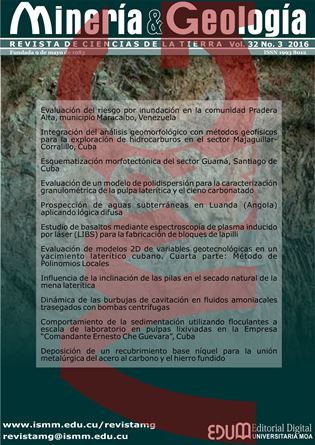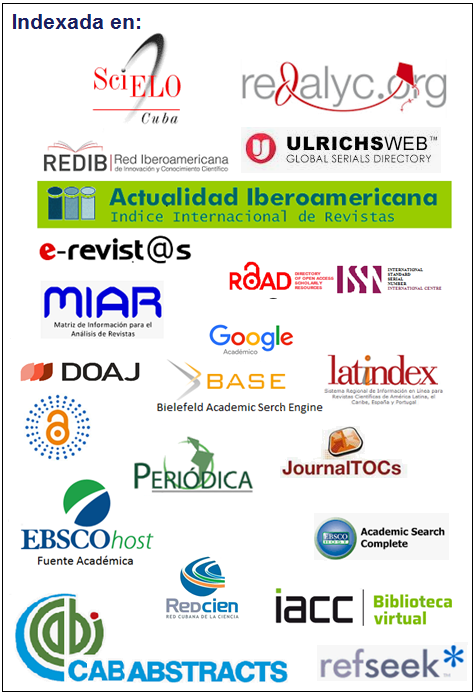Depositing Nickel-based Hardfacing to Join Carbon Steel and Cast Iron
Keywords:
welding, microstructure, carbon steel, cast iron, nickel based hardfacing.Abstract
The objective of this investigation is to determine the micro-structural behavior of a joint between cast iron and carbon steel by depositing a nickel-based substrate in the carbon steel. The filler was added through Shielded Metal Arc Welding using Castec 3099 (UTP 8) electrodes while the base materials were joined through Gas Tungsten Arc Welding with ER 70S – A1 bare electrodes. The Schaeffler diagram was used to analyze the chemical composition of the resulting weld beads. The results of the analysis performed on the welded area and the heat influence zone indicated the formation of acicular structures near the welded line when Castec 3099 electrodes are used and the formation of skeletal ferrite on the heat influence zone during the application of this welding process. An austenitic mixture is formed when ER 70S – A1 electrodes are used.Downloads
References
ALFONSO, J.; PACHECO, F.; CASTRO, A. & TORRES, J. 2005: Influence of the substrate bias voltaje on the crystallographic structure and mechanical properties of Ti6Al4V coatings deposited by rf magnetron. Phys.stat.sol. 2(10): 3786-3789.
ARIVAZHAGAN, N.; SINGH, S.; PRAKASH, S. & REDDY, G. 2008: An assessment of hardness, impact strength, and hot corrosion behaviour of friction-welded dissimilar weldments between AISI 4140 and AISI 304. International Journal of advance manufacturing technology 39(12): 679-689.
FACCHINI, L.; VICENTE, N.; LONARDELLI, I.; MAGALINI, E.; ROBOTTI, P. & MOLINARI, A. 2010: Metastable austenite in 17-4 precipitation-hardening stainless steel produced by selective laser melting. Adv Eng Mater. 12(3): 18-28.
FERNÁNDEZ, T.; RODRÍGUEZ, I.; CORREA, R. & ALCÁNTARA, D. 2014: Junta de soldadura disímil de la aleación HK-40 y del hierro fundido 24. Ingeniería Mecánica 17(2): 98-107.
MADHUSUDAN, G. & SRINIVASA, R. 2009: Microstructure and mechanical properties of similar and dissimilar stainless steel electron beam and friction welds. International Journal of advance manufacturing technology 45(12): 875-888.
NELSON, T.; LIPPOLD, J. & MILLS, M. 1999: Nature and evolution of the fusion boundary in ferritic-austenitic dissimilar weld metals, part 2: on cooling transformation. Welding Journal 79(10): 267-277.
OSPINA, R.; AGUIRRE, H. & PARRA, H. 2007: Soldabilidad en aceros inoxidables y aceros disimiles. Scientia et Technica XIII(34): 273-278.
REDDY, G.; RAO, K. & SEKHAR, T. 2008: Microstructure and pitting corrosion of similar and dissimilar stainless steel welds. Science and technology of welding and joining 13(4): 363-377.
SAMAL, M.; BALANI, K.; SEIDENFUSS, M. & ROSS, E. 2009: An experimental and numerical investigation of fracture resistance behaviour of a dissimilar metal welded joint. Journal of Mechanical Engineering Science 223(25): 1502-1523.
VAN-XUAN, T. & JWO, P. 2010: Analytical stress intensity factor solutions for resistance and friction stir spot welds in lap-shear specimens of different materials and thicknesses. Engineering Fracture Mechanics 77(11): 2611-2639.
VILLANUEVA, D.; JUNIO, F.; PLAUT, R. & PADILHA, A. 2006: Comparative Study on Sigma Phase Precipitation of Three types of Stainless Steels: Austenitic, Superferritic and Duplex. Material Science and Technology 22(9): 1098-1104.
ZAPATA, A. & MESA, H. 2005: Terología: tecnología de la reconstrucción. Scientia et Technica XI(29): 133-138.
ZHANG, W.; ELMER, J. & DEBROY, T. 2005: Integrated modelling of thermal cycles, austenite formation, grain growth and decomposition in the heat affected zone of carbon steel. Science and Technology of Welding and Joining 10(5): 574-582.
Published
How to Cite
Issue
Section
- Authors retain copyright and guaranteeing the right magazine to be the first publication of the work as licensed under a Creative Commons Attribution-NonCommercial that allows others to share the work with an acknowledgment of the work's authorship and initial publication in this journal.
- Authors may establish separate supplemental agreements for the exclusive distribution version of the work published in the journal (eg, place it in an institutional repository or publish it in a book), with an acknowledgment of its initial publication in this journal.
- Authors are allowed and recommended to disseminate their work through the Internet (e.g., in institutional telematic archives or on their websites) before and during the submission process, which can produce interesting exchanges and increase citations of the published work. (See The effect of open access)




